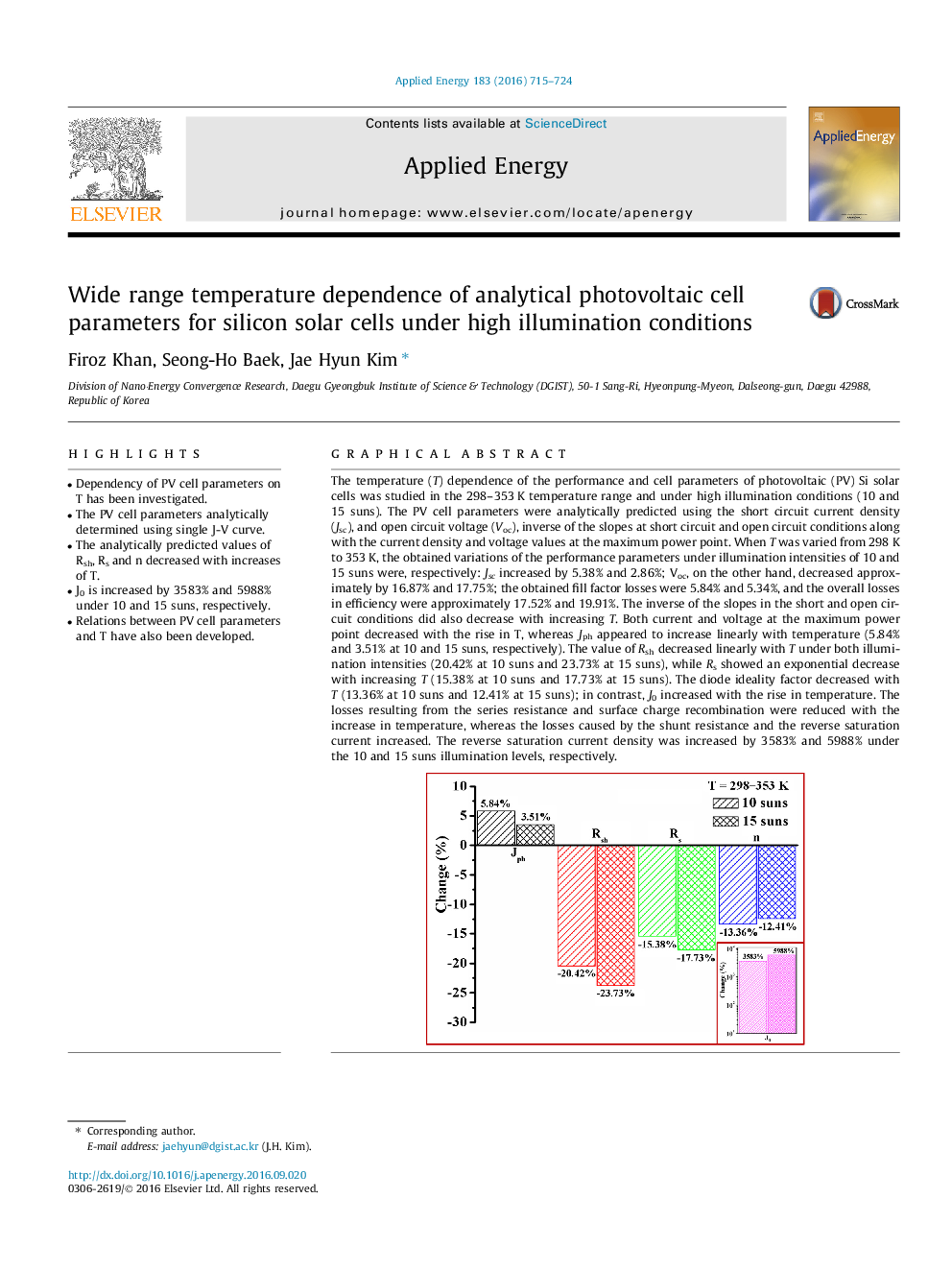| کد مقاله | کد نشریه | سال انتشار | مقاله انگلیسی | نسخه تمام متن |
|---|---|---|---|---|
| 4916609 | 1428105 | 2016 | 10 صفحه PDF | دانلود رایگان |
عنوان انگلیسی مقاله ISI
Wide range temperature dependence of analytical photovoltaic cell parameters for silicon solar cells under high illumination conditions
ترجمه فارسی عنوان
وابستگی به دامنه وسیعی از پارامترهای سلول های فتوولتائیک تحلیلی برای سلول های خورشیدی سیلیکون تحت شرایط روشنایی بالا
دانلود مقاله + سفارش ترجمه
دانلود مقاله ISI انگلیسی
رایگان برای ایرانیان
کلمات کلیدی
موضوعات مرتبط
مهندسی و علوم پایه
مهندسی انرژی
مهندسی انرژی و فناوری های برق
چکیده انگلیسی
The temperature (T) dependence of the performance and cell parameters of photovoltaic (PV) Si solar cells was studied in the 298-353Â K temperature range and under high illumination conditions (10 and 15 suns). The PV cell parameters were analytically predicted using the short circuit current density (Jsc), and open circuit voltage (Voc), inverse of the slopes at short circuit and open circuit conditions along with the current density and voltage values at the maximum power point. When T was varied from 298Â K to 353Â K, the obtained variations of the performance parameters under illumination intensities of 10 and 15 suns were, respectively: Jsc increased by 5.38% and 2.86%; Voc, on the other hand, decreased approximately by 16.87% and 17.75%; the obtained fill factor losses were 5.84% and 5.34%, and the overall losses in efficiency were approximately 17.52% and 19.91%. The inverse of the slopes in the short and open circuit conditions did also decrease with increasing T. Both current and voltage at the maximum power point decreased with the rise in T, whereas Jph appeared to increase linearly with temperature (5.84% and 3.51% at 10 and 15 suns, respectively). The value of Rsh decreased linearly with T under both illumination intensities (20.42% at 10 suns and 23.73% at 15 suns), while Rs showed an exponential decrease with increasing T (15.38% at 10 suns and 17.73% at 15 suns). The diode ideality factor decreased with T (13.36% at 10 suns and 12.41% at 15 suns); in contrast, J0 increased with the rise in temperature. The losses resulting from the series resistance and surface charge recombination were reduced with the increase in temperature, whereas the losses caused by the shunt resistance and the reverse saturation current increased. The reverse saturation current density was increased by 3583% and 5988% under the 10 and 15 suns illumination levels, respectively.267
ناشر
Database: Elsevier - ScienceDirect (ساینس دایرکت)
Journal: Applied Energy - Volume 183, 1 December 2016, Pages 715-724
Journal: Applied Energy - Volume 183, 1 December 2016, Pages 715-724
نویسندگان
Firoz Khan, Seong-Ho Baek, Jae Hyun Kim,
